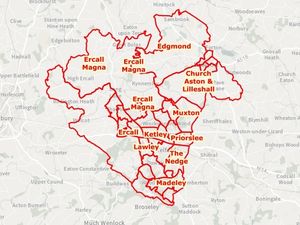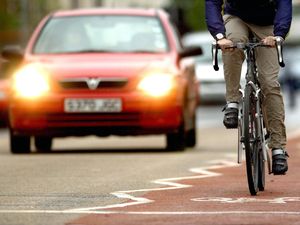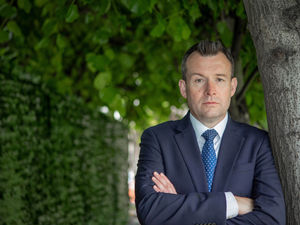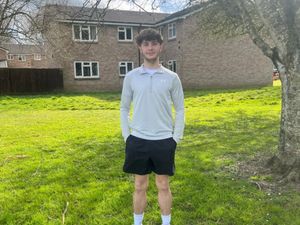Proposed Telford & Wrekin boundary changes revealed
The political map of Telford and Wrekin could be redrawn with wards across the borough splitting, merging and shifting their borders, if proposals from an elections body are adopted.

Last year Telford & Wrekin Council invited the Local Government Boundary Commission for England (LGBCE) to conduct a review of the borough, noting that population shifts meant some councillors represented up to 25 per cent more residents than some of their colleagues.
Changes proposed by the LGBCE include splitting Newport into four single-councillor seats and creating new divisions for Lawley and Sutton Hill.
The changes are available to view online and are under consultation until February 7, 2022.
Telford and Wrekin Council Boundary Review Committee chairman Kuldip Sahota has urged residents to get involved, saying “local knowledge is a vital ingredient”.
Telford and Wrekin currently elects 54 borough councillors from 30 one, two, or three-member wards.
Under LGBCE proposals, councillor numbers would remain the same but the number of wards would increase to 33.
Edgmond and Ercall Magna – geographically the largest ward – is currently represented by two councillors, fellow Conservatives Stephen Bentley and Stephen Burrell.
Under the plans, this ward would become two one-member wards.
Newport is currently divided into a North-and-West ward, represented by Conservative Tim Nelson and independent councillor Peter Scott, and a South-and-East ward, held by Conservative Eric Carter and Liberal Democrat Thomas Janke.
The LGBCE proposals would see the town revert to four wards following the four points of the compass, as it did until the 2015 election and still does at town council level.
Madley and Sutton Hill are currently represented by Labour members Janice Jones, Paul Watling and Derek White in a three-member ward.
The LGBCE proposes splitting it, creating a dedicated one-seat Sutton Hill ward.
In January 2020, the borough’s Boundary Review Committee heard the LGBCE automatically reviews any council where the electors-per-councillor ratio varies by 30 per cent or more between its most densely and most sparsely populated wards.
The committee heard there were on average 2,389 registered voters per borough councillor in Telford and Wrekin, but the Brookside ward was 12.8 per cent below this while Horsehay and Lightmoor – which incorporates Lawley – was 13.2 per cent above.
This discrepancy was not enough to trigger an LGBCE review, but the committee agreed to request one.
In a subsequent meeting in summer 2021, the committee heard the borough-wide voters-to-councillor ratio had risen to 2,464 and Horsehay and Lightmoor had risen to 19 per cent above that average.
The LGBCE’s proposals include reducing the size of the Brookside ward by only including homes within Brookside Avenue – a move which reduces its electorate from 4,265 to 2,722 – and halving its number of councillors from two to one.
It also proposes creating a new three-member Lawley ward at the north end of the existing Horsehay and Lightmoor division.
A one-member ward in the south would retain the old name and a section of the middle, south of Horsehay Common and surrounding Horsehay Pool, would be absorbed into the existing Dawley and Aqueduct ward.
Council leader Shaun Davies said: “The shape and size of our communities change over time. It’s important that we look at these changes and how they might affect the way local people are represented on the council.
“The changes put forward by the commission aim to give balance to the number of people who are represented by each of our 54 councillors and reflect the unique nature of each of our communities and their identities.
“Please take the opportunity to share your views on the proposals. Local government decisions impact your lives every day – so it’s important that these arrangements are right.”
Cllr Sahota said: “People are likely to hold views both for and against the proposals. Indeed, there are some areas where the council are in agreement with what the Commission are putting forward and others where we are not.
“This is why it’s so important for anyone who holds a view to get involved in the consultation.”
LGBCE chairman Professor Colin Mellors said: “We want people in Telford and Wrekin to help us.
“We would like them to let us know whether they agree with our proposals before we take final decisions.
“We want to make sure these new electoral arrangements reflect communities. We also want them to be easy to understand and convenient for local people.”
The final recommendations will be published in March and, if adopted, they will be used in the 2023 local election.
To view the proposals, compare them to the existing arrangements and submit thoughts, visit www.consultation.lgbce.org.uk/node/27836.




